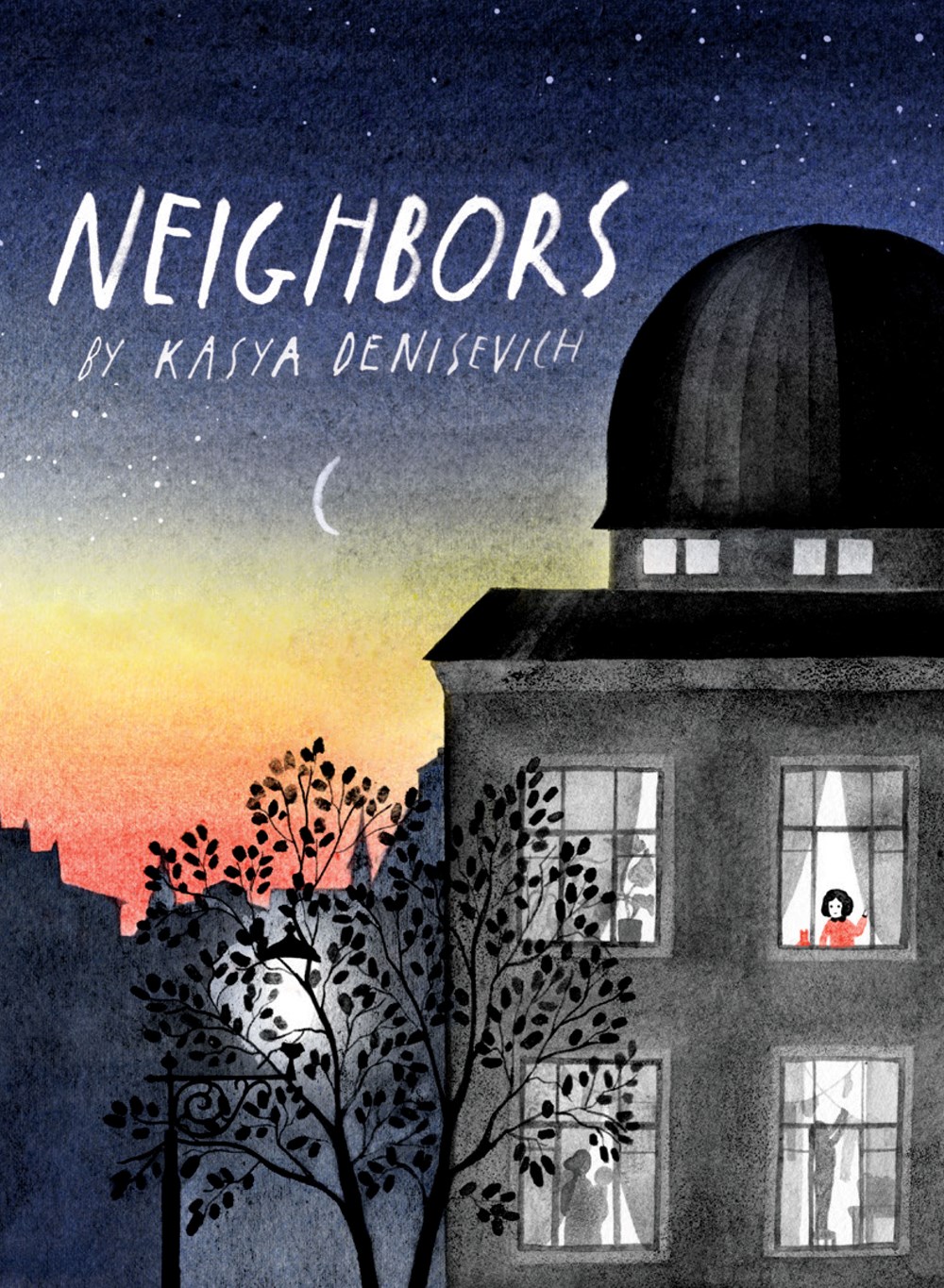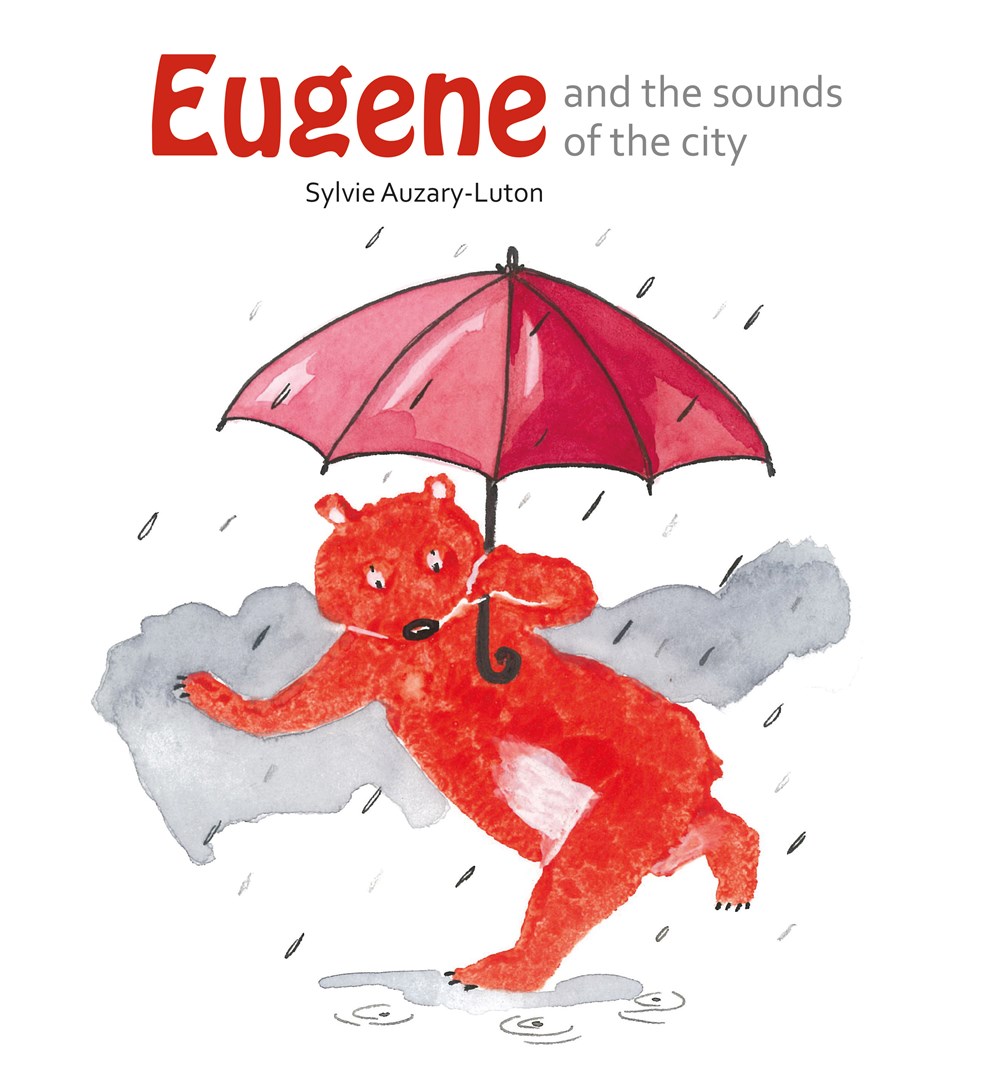October wouldn’t be the same without a bit of spine-tingling fun! These three books offer spooktacular thrills and chills for readers with a wide range of reading abilities. Whether they read along with a grown-up or they’re confidently reading solo, youngsters will be spellbound by these supernatural selections.
Gustavo the Shy Ghost
Rookie readers will adore Flavia Z. Drago’s Gustavo the Shy Ghost, a frightfully delightful picture book about building confidence, making friends and—oh yes—monsters. Though ghosts are considered generally unpleasant, unwelcome presences, Gustavo is a singular exception. His rosy cheeks and unwavering grin positively radiate good cheer. He also harbors secret feelings of love for Alma, an invisible girl who belongs to a group of ghouls he longs to befriend. Alma’s spooky squad includes a mini-Bride of Frankenstein (there’s no mistaking her high-voltage hairdo) and a little soccer-playing devil clad in a team jersey (he’s number 13, of course).
 Gustavo is too shy to talk directly to the crew, so he tries—through a variety of guises—to get their attention. He morphs into a soccer ball, assumes the shape of a balloon and masquerades as a lampshade while Alma reads a book. But thanks to his otherworldly pallor, poor Gustavo is overlooked. He blends right in with the scenery!
Gustavo is too shy to talk directly to the crew, so he tries—through a variety of guises—to get their attention. He morphs into a soccer ball, assumes the shape of a balloon and masquerades as a lampshade while Alma reads a book. But thanks to his otherworldly pallor, poor Gustavo is overlooked. He blends right in with the scenery!
Gustavo is feeling down when inspiration strikes: “I have to be brave,” he thinks. “I have to let others see me!” When he concocts a plan involving a musical concert on the Day of the Dead, his efforts to connect with Alma and the others are finally rewarded.
Through Gustavo’s haunting hijinks, Drago gently explores the importance of being yourself and sharing the qualities that make you unique with others. She pairs easy-to-follow text with silly monster scenes that young kiddos will adore. Inspired by her native Mexico, her mixed-media illustrations feature powerful pops of color that make her book bright and inviting. Gustavo’s story will be in high demand at storytime long after Halloween has passed. Here’s to making new friends, no matter how spooky!
ALSO IN BOOKPAGE: Three Halloween reads for scaredy-cats
The Haunted Lake
More experienced readers will find ghostly thrills in P.J. Lynch’s The Haunted Lake, an atmospheric story that’s just right for a chilly, cozy October night. When a dam is built across a river near the town of Spetzia, the town floods and a new lake is formed in its place. The residents relocate, but Jacob and his father, Reuben, remain in their hilltop home and take up fishing to make ends meet. Each day, when they go out on their boat, they see the town’s old clock tower, just tall enough to emerge from the water. The rest of Spetzia, meanwhile, remains submerged. Small wonder that the lake is rumored to be haunted.
 Then Jacob falls in love with a girl named Ellen, and they plan to marry. But one night while out fishing alone, Jacob meets Lilith, a beautiful ghost. She introduces Jacob to the murky world beneath the lake’s surface, where he finds the village of Spetzia still intact and populated by phantom townsfolk. With the passage of time, it becomes clear that Lilith intends to trap Jacob into staying forever. “We need you, Jacob of the living,” she tells him ominously. “You remind us of ourselves . . . our old selves.” Jacob is soon caught up in a nightmare, and only with Ellen’s help can he hope to escape.
Then Jacob falls in love with a girl named Ellen, and they plan to marry. But one night while out fishing alone, Jacob meets Lilith, a beautiful ghost. She introduces Jacob to the murky world beneath the lake’s surface, where he finds the village of Spetzia still intact and populated by phantom townsfolk. With the passage of time, it becomes clear that Lilith intends to trap Jacob into staying forever. “We need you, Jacob of the living,” she tells him ominously. “You remind us of ourselves . . . our old selves.” Jacob is soon caught up in a nightmare, and only with Ellen’s help can he hope to escape.
Lynch narrates these uncanny proceedings in a style that’s crisp and lucid. He creates a mood of suspense in part through his breathtaking illustrations. His realistic watercolors are dominated by a spectral palette that serves the story well, full of misty shades of gray and blue and a deep, aquatic green. Readers can make out the ethereal depths of the lake and what lies under its surface: the houses and other structures of what once was Spetzia. Lynch’s beautifully composed scenes support a story of classical dimensions. The Haunted Lake is an eerie tale that feels timeless.
ALSO IN BOOKPAGE: Halloween frights and delights
The Girl and the Ghost
Advanced readers comfortable with independent reading will be transported by Hanna Alkaf’s The Girl and the Ghost. Set in Malaysia, a country rich in supernatural legends, according to the author’s introductory note, the novel tells the story of young Suraya and her pelesit friend, Pink.
As a pelesit, a mischievous figure from Malaysian folklore who usually appears in the form of a grasshopper, Pink is dedicated to serving Suraya. The granddaughter of Pink’s previous mistress, who was a witch, Suraya lives with her mother in a “wooden house on the edge of green, green paddy fields, a house that rattled and shook when the monsoon winds blew.” They don’t have much money—Suraya is ashamed of her baju kurungs, the long tops and bottoms her mother sews—and she gets bullied at school. When Pink first enters her life, she’s in need of a companion.
 Suraya learns what real friendship feels like after she hits it off with Jing Wei, a new student in class. But Pink is jealous of their connection and deploys his supernatural powers to frightening ends. Shocked by the nature of his devotion, Suraya orders Pink to leave, but he’s not so easy to get rid of.
Suraya learns what real friendship feels like after she hits it off with Jing Wei, a new student in class. But Pink is jealous of their connection and deploys his supernatural powers to frightening ends. Shocked by the nature of his devotion, Suraya orders Pink to leave, but he’s not so easy to get rid of.
Suraya and Pink’s complex relationship and mutual need for one another are convincingly rendered by Alkaf, who enriches the book with elements of Malaysian myth, including a chilling array of evil creatures they must contend with during the novel’s climax. Even as she spins a fabulous tale of enchanted beings and adventure, Alkaf never loses sight of her central themes: family ties, loyalty and friendship, and the risks and rewards of love. The Girl and the Ghost is an out-of-the-ordinary story that’s just right for readers who are ready to expand their horizons, and a true treat for Halloween.

 Seventeen years later, Elva pins sunflowers in her hair for the dance, hoping to catch the eye of handsome farmhand Willem. Her parents, Agnes and Oskar, have warned her never to share her secret—when she looks into water, she sees visions of the future—but maybe telling Willem will be fine. Besides, she'll need his support: A frightening vision and the discovery of a stash of hidden letters has led Elva to seek out the only other person she knows of with magical powers, the witch Mathilde, who's rumored to kidnap children as they play in the woods.
Seventeen years later, Elva pins sunflowers in her hair for the dance, hoping to catch the eye of handsome farmhand Willem. Her parents, Agnes and Oskar, have warned her never to share her secret—when she looks into water, she sees visions of the future—but maybe telling Willem will be fine. Besides, she'll need his support: A frightening vision and the discovery of a stash of hidden letters has led Elva to seek out the only other person she knows of with magical powers, the witch Mathilde, who's rumored to kidnap children as they play in the woods. Because magic is banned on penalty of death, no one must ever know that Piro came to life after a spell recited under a blue moon. But it’s hard to keep the secret because of the trace the magic left behind: A wooden splinter bursts from her skin whenever Piro tells a lie. When the Margrave summons Piro to the palace for a special commission, she'll need all of her skill as a puppet-maker—and as a magical creature herself—to defeat the frightened tyrant's twisted imagination.
Because magic is banned on penalty of death, no one must ever know that Piro came to life after a spell recited under a blue moon. But it’s hard to keep the secret because of the trace the magic left behind: A wooden splinter bursts from her skin whenever Piro tells a lie. When the Margrave summons Piro to the palace for a special commission, she'll need all of her skill as a puppet-maker—and as a magical creature herself—to defeat the frightened tyrant's twisted imagination. Yehudah, hiding from a mysterious stranger who may be responsible for his father's long-ago disappearance, follows a crow to a treasure house run by a bargain-making demon whose agreements never quite turn out well for his petitioners. Bluma, meanwhile, flees a dark spirit in her house that leaves behind a very strange spoon, stumbles into a graveyard and is soon surrounded by the vengeful demon Lilith and her cat-like entourage. Yehuda and Bluma’s paths cross and they find themselves in the Far Country beyond the living lands. There’s a ferryboat operator who must be paid, a red scarf whose protective value is much more than mere warmth and a magical library that returns answers to visitors' questions in their own handwriting. Back in the everyday world, a famous Rebbe is about to host his youngest granddaughter's wedding, and everyone is invited—guests from the world of the living and from the world of the dead.
Yehudah, hiding from a mysterious stranger who may be responsible for his father's long-ago disappearance, follows a crow to a treasure house run by a bargain-making demon whose agreements never quite turn out well for his petitioners. Bluma, meanwhile, flees a dark spirit in her house that leaves behind a very strange spoon, stumbles into a graveyard and is soon surrounded by the vengeful demon Lilith and her cat-like entourage. Yehuda and Bluma’s paths cross and they find themselves in the Far Country beyond the living lands. There’s a ferryboat operator who must be paid, a red scarf whose protective value is much more than mere warmth and a magical library that returns answers to visitors' questions in their own handwriting. Back in the everyday world, a famous Rebbe is about to host his youngest granddaughter's wedding, and everyone is invited—guests from the world of the living and from the world of the dead.

 Starcrossed
Starcrossed Neighbors
Neighbors Nothing in Common
Nothing in Common




 Eugene and the Sounds of the City
Eugene and the Sounds of the City The Story Orchestra: Carnival of the Animals
The Story Orchestra: Carnival of the Animals The Oboe Goes Boom Boom Boom
The Oboe Goes Boom Boom Boom









